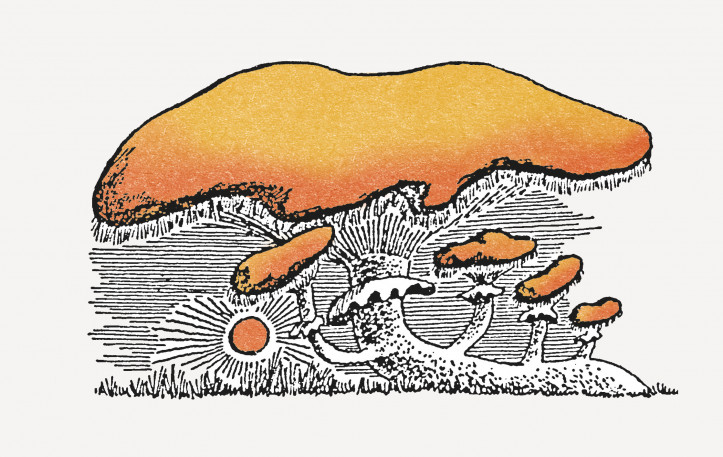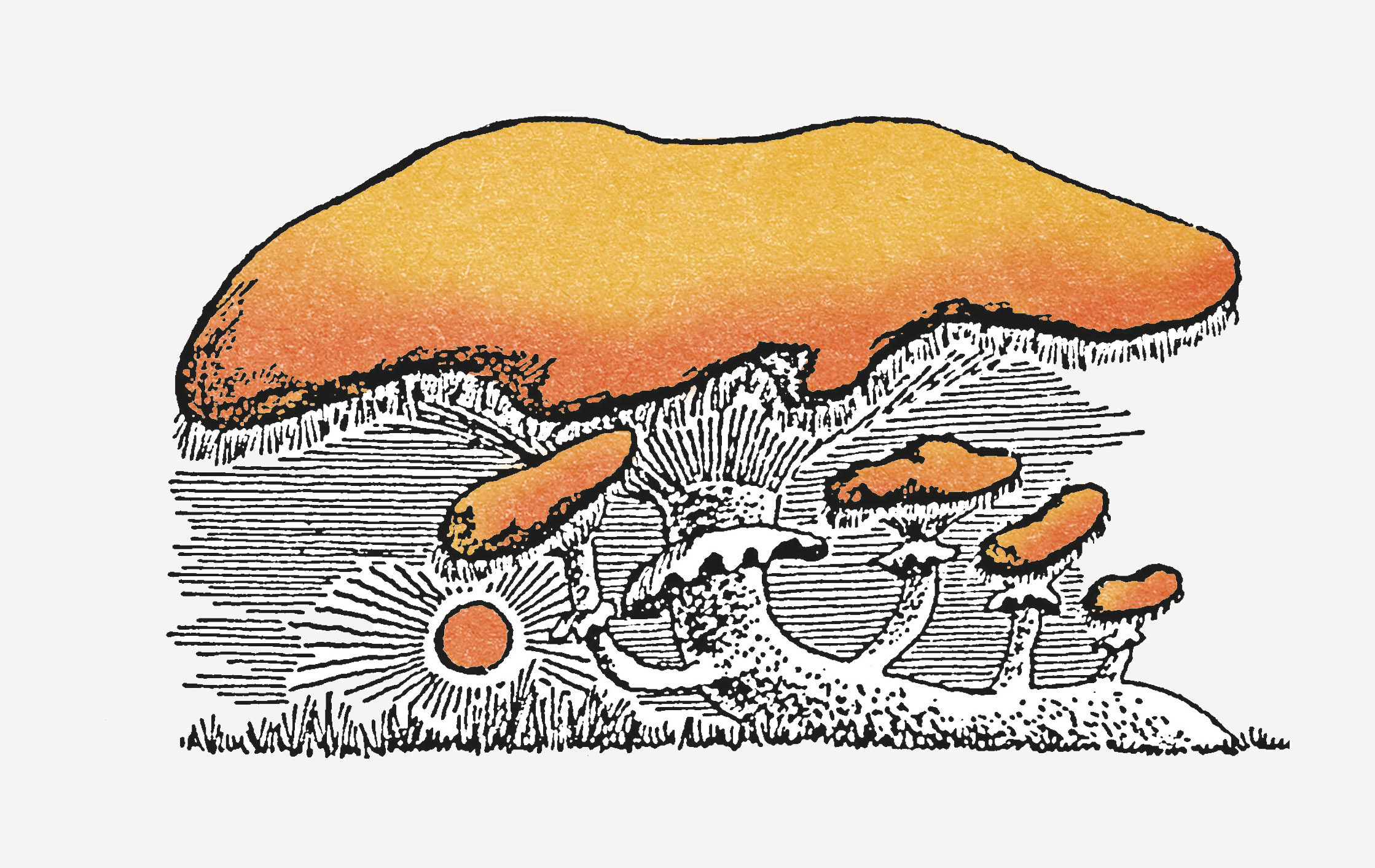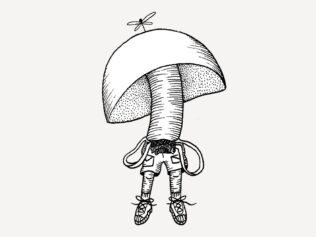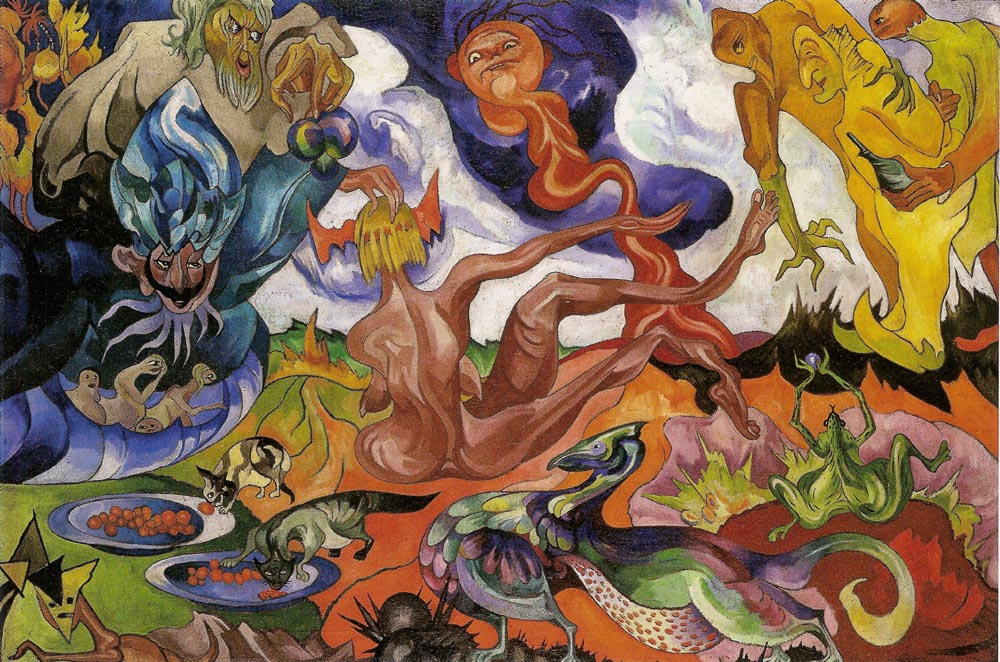
The primaeval Białowieża Forest is populated with fungi that might help treat the most dangerous diseases, including cancer. The trouble is, human activity could drive them into extinction before many of them are ever discovered and studied.
For several years now, the town of Hajnówka on the outskirts of Białowieża Forest has been home to an unusual bank. Much like other such institutions, it offers people hope for a better tomorrow. However, stored away inside this remarkable bank is not money, but rather… fungal extracts. Its staff scour the forest to collect both rare and common fungi that exhibit astonishing properties. These fungi are generally not mushrooms of the familiar stem-and-cap variety. More often than not, they are fungal growths found hidden amid tree roots, attached to living trees, or colonizing dead trunks.
The bank was established at the initiative of Sławomir Bakier of the Institute of Forest Sciences at the Faculty of Civil Engineering and Environmental Sciences, Białystok University of Technology. In the interview he gave me, he explained: “The Białowieża Forest is an invaluable and rich source of fungi. It is particularly abundant in polypores, which are associated with deadwood. Some of them are endemic to the forest, which means that they can be found only there. Many of them have untapped medicinal potential.”
Polypore and chaga
Inspiration for the establishment of the bank came from Jordan Zjawiony, a retired Polish researcher who has long lived and worked in the United States. He has always been interested in natural chemistry and in the development of pain-relief drugs. He first met Bakier in 2010, which led to collaboration between the University of Mississippi and the Białystok University of Technology five years later. The scholars tapped into funds from a grant to study the ecosystems in Białowieża Forest. Zjawiony inspired the Białystok University of Technology’s staff to study the biological activity of fungal extracts.
“Biologically active fungi are ones that show anti-bacterial, anti-fungal, anti-viral, or anti-cancer properties. But such species are often also very toxic,” Bakier observes. “The purpose of our work is to find species that are effective against a specific strain of bacteria, for instance, not against the whole healthy organism.”
Many fungi have a long history of use in medicine. Thanks to a certain mummy, for example, we know that the birch polypore (Fomitopsis betulina) was already used by humans thousands of years ago. In 1991, the remarkably well-preserved corpse of an ‘iceman’ nicknamed Ötzi was found in the Alps near Bolzano. The man lived around the time of 3300 BCE. On the day of his death, he was dressed in goatskin leggings and boots made of bear fur. He also had a sheepskin coat and a bag. Inside that bag he was carrying birch polypore, which helps relieve joint pain and is currently also used to treat Lyme disease. If torn off a tree and applied to a wound as a dressing, this white bracket fungus will soak up blood, and the piptamine it contains will act as a disinfectant and an anti-bacterial agent. In turn, a tincture or tea made from this fungus will help treat inflammation and gastrointestinal disorders, and can also dispose of parasites. Another type of bracket fungus, this time black in colour, is called chaga (Inonotus obliquus). It has been used in folk medicine since at least the 16th century (but it was even mentioned in the works of Hippocrates). It helps alleviate gastrointestinal complaints and boosts the body’s resistance to infections. In addition, it has pain-relieving and anti-viral properties.
These fungi are nowadays commonly used in East Asian cooking and medicine, and have been for thousands of years. A fungus called lingzhi or reishi (Ganoderma lucidum) has wide applications in China, but it can be sometimes found also in Białowieża Forest. Referred to as ‘the divine mushroom of immortality’, the lingzhi fungus even has museums in its honour, for example in Nantong. It works against cancer cells and stimulates the immune system, in addition to being used to treat jaundice, hypertension and asthma. In turn, extracts from the shiitake mushroom (Lentinula edodes) are effective as immunostimulants and anti-cancer medicines, reducing the side-effects of radiation and chemotherapy. In China, there are whole villages specialized in growing specific fungal species.
As of yet, no medicines or dietary supplements based on fungi have been produced in Poland. Indeed, Europeans are generally sceptical of fungi. For example, the mushroom commonly called turkey tail (Trametes versicolor), which can be found in Białowieża Forest forming dense structures on deadwood, is considered inedible in Europe and in the United States, but not in China and Mexico. This fungus was used in 1973 to develop the first officially registered anti-cancer drug, used to combat stomach cancer and leukaemia.
“Fungi are a very different form of life. Our imaginations fail us when we try to fully grasp them,” says Bakier, whose fascination with fungi started seven years ago. He was amazed by the fact that fungi create networks that allow for communication between trees and bushes, almost like the internet. In addition, the world’s largest known living organism is a fungus: a mycelium of Armillaria ostoyae (colloquially called the “humongous fungus”) found in Oregon covers more than 2200 acres. Scientists estimate that the organism is around 2500 years old and weighs several thousand tons.
Chanterelles and champignons
In Poland, we certainly have an appreciation for the taste of mushrooms – they form part of the national cuisine and we can hardly imagine such holiday feasts as Christmas Eve without them. However, we regard them as being hard to digest and having no nutritional value; that they are only worth eating for their flavour. Or at least that is what many Poles think.
“Of course, some species are difficult to digest, but a lot depends on how they are prepared. If we fry them, how could they be otherwise? Some species are very nutritious. Take the kania, or parasol mushroom (Macrolepiota procera). It contains a whole array of endogenous and exogenous proteins, making an excellent substitute for animal proteins,” Bakier explains. “Personally, I think that fried parasol mushrooms are even better than pork tenderloins!”

Chanterelles (kurki) are richer in beta-carotene than carrots, porcini mushrooms (borowiki) contain more selenium than nuts, and oyster mushrooms (boczniaki) contain lovastatin, known to reduce cholesterol. The more common champignons or button mushrooms (pieczarki) contain ergothioneine, which has health benefits. (Several years ago, Bakier tells us, he started to eat button mushrooms raw – he only rinses them with water, yet he is still alive and well, despite his wife’s concerns.) Many edible mushrooms contain antioxidants, vitamins, bioelements, and above all polysaccharides with immune-stimulating and anti-cancer properties.
We also have fungi to thank for the first antibiotic, namely penicillin, discovered by Alexander Fleming in 1928, and the first statin, which was obtained from mould in the 1970s and lowers cholesterol.
Anti-cancer powder
Poles are known for our love of mushroom-hunting and expertise in growing button mushrooms (Poland is the world’s second largest producer of such mushrooms after China). So why, like Europeans in general, are we still so sceptical of medicinal fungi?
As Bakier puts it: “In the past, anyone who tried to use fungi, which after all include some highly poisonous and hallucinogenic species, could face persecution in Europe. I have read that herbalists were targeted by the Church. Until the 19th century, witches were burned at the stake, and the use of mushrooms to treat people was also considered witchcraft.”
Although only 3% of fungi contain dangerous toxins, we are suspicious of almost every mushroom. That said, Europeans are slowly overcoming their concerns in this respect. Although research conferences devoted to fungi are still dominated by scholars from Asia, they are now attended increasingly by Italians, Germans, Americans and Poles. At a recent conference in China’s Nantong in 2019, Bakier and Halina Car, head of the Department of Experimental Pharmacology, Medical University of Białystok, presented an innovative discovery: the properties of Heterobasidion annosum. It may soon turn Poland into a pioneer of an emerging branch of industry in Europe.
Everything started with a certain proposal. Several years ago, Bakier gave Car – who had earlier studied different substances inhibiting the growth of colon cancer cells – five samples of extracts, proposing that she test their mechanism of action. The samples included Heterobasidion annosum, an invasive inedible fungus that parasitizes pine tree roots and gradually destroys them. “We reasoned that if it was invasive against trees, it might have similar effects on cancer cells,” Car relates.
She received the samples in the form of an extract, in this case a brownish powder. The Institute’s staff first crush the fruiting body of the fungus, then mix it with alcohol, rinse out the substance, and next evaporate the liquid, thus obtaining a powder that is a concentrated form of the most active compounds in the fungus. Car and her team treated both healthy and cancer cells with the powder to see if they would grow, die or maybe proliferate. Their reaction changed depending on the concentration. During the observations, the scientists discovered a certain concentration that inhibited the growth of cancer cells, yet had little effect on healthy cells. Such a finding is unique and very intriguing. For instance, another extract she studied – this time made of the beautiful polypore called Pycnoporellus fulgens – was found to kill cancer cells, but also many healthy cells. In other words, it works in much the same way as classic oncologic pharmacotherapy, which causes considerable damage to the whole body.
Studies into Heterobasidion annosum are currently at the animal testing stage. Colon cancer cells were implanted into mice, and the growth of the tumour was observed after the mice were given the extract for 35 days. The tumour shrank, and the effect obtained by the researchers was similar to that achieved with the help of the reference treatment currently being used in cancer therapy. The researchers will next check what will happen if the dosages are altered and the period of therapy is prolonged. However, these initial discoveries were so innovative that patent applications have already been filed with the Polish and the European patent offices: no-one else in the world is studying this type of fungi. The first findings have been published in the prestigious International Journal of Molecular Sciences.
“In my opinion, the use of fungal extracts in treating colon cancer appears promising and sensible,” Car argues. “This type of tumour is exceptionally malignant. Statistics show that it kills around 12,000 people every year in Poland. It is the third-leading cause of cancer-related death in men and the second in women. In addition, it is linked to unhealthy lifestyle and diet. Of course, medicinal fungi are often included in dietary supplements, but most of them have not been studied in the way we study them. Maybe in the future, people predisposed for this type of cancer will take dietary supplements based on Heterobasidion annosum to protect themselves from developing the disease or to live disease-free lives for longer.”
Ancient fungi await young scientists
The biggest challenge currently being faced by the team involves cultivating a supply of Heterobasidion annosum. In order to produce a medicine, fungi of the species must consistently yield extracts with replicable content. Last year, when the Institute’s staff returned to the site where they had collected samples several years earlier, they could no longer find the fungus. Most probably, the humidity was too low and the temperature was too high. A potential drug, however, cannot depend on what fungi will grow in a given year.
“The study of fungi turns up not only new species, but also previously unknown chemical substances. I realized from the outset that this was taking us well beyond our own capabilities,” Bakier relates. “And so we have set up a consortium.” In addition to Car and Bakier, its members include Magdalena Jaszek of the Maria Curie-Skłodowska University in Lublin, who has studied the use of the mossy maze polypore (Cerrena unicolor) in the treatment of cervical cancer, and Bożena Muszyńska of the Jagiellonian University, who has studied medicinal fungi for 30 years.
Fungi growing out in the wild are not always easy to cultivate in lab conditions. Muszyńska is working in her lab on the best substrate for Heterobasidion annosum so that it can grow as it does in the forest. She has successfully grown the fungus both using solid substrates and hydroponically – but members of the consortium cannot reveal further details, or else they might ruin their chances for a patent. Only a patent will make it possible to launch production of an extract to be used in medicines, supplements or food intended for particular nutritional uses.
The bank of fungal extracts in Hajnówka already holds nearly 200 specimens, with more than 90% of them coming from Białowieża Forest. This primaeval woodland is currently estimated to be home to 1500 species that have been identified and are visible to the naked eye, but scientists keep discovering more. Nearly 300 of them grow on deadwood tree trunks, a growth medium that is largely unavailable in commercial forests.
“We have yet to even study mycorrhizal fungi, which grow in the soil and form symbiotic associations with specific tree species. Such fungi include rough-stemmed boletes (koźlarze), porcini mushrooms (prawdziwki), and slippery jacks (maślaki). Fungi truly are a terra incognita. Their possibilities are amazing,” Bakier says with excitement. “They form a kind of treasure-trove that has been little studied in chemical terms. Often we know that one of their components works, but we have no idea which one. The scary thing is that we will most probably not discover certain species before human activity causes them to go extinct. Also, we do not have enough personnel – Poland has too few mycologists and fungiculture practitioners. So I highly encourage young people to consider careers in this discipline, because there are still plenty of discoveries just waiting to be made!”
Translated from the Polish by Daniel J. Sax










